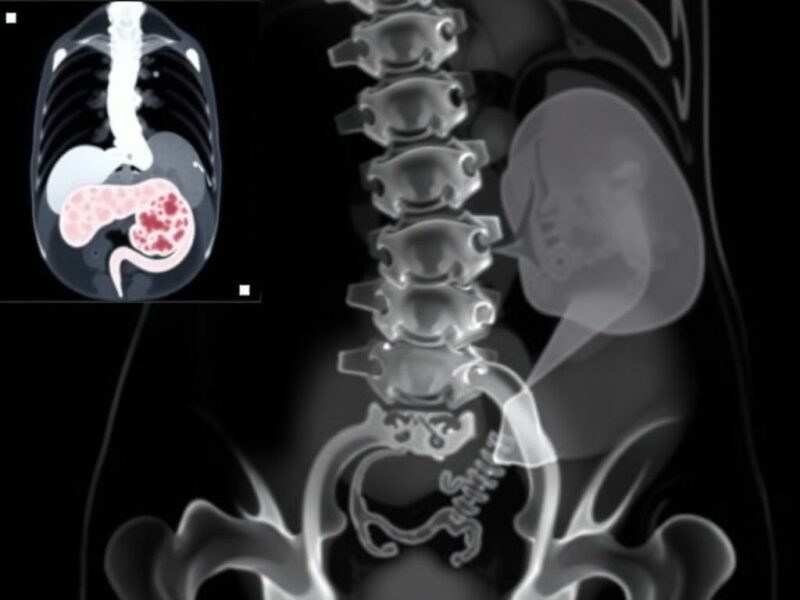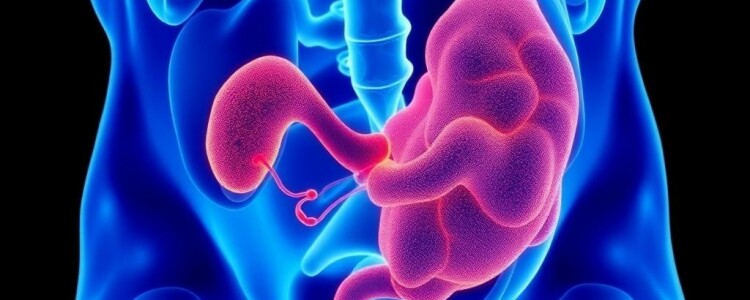Appendicitis is a common and urgent medical condition, but when it occurs in immunocompromised patients, the story becomes far more complicated. Immunocompromised individuals—those whose immune systems are weakened due to diseases, medications, or treatments—face unique risks, diagnostic challenges, and treatment considerations when appendicitis develops. This article will guide you through the complexities of appendicitis in immunocompromised patients, explaining why their care requires extra caution, how diagnosis can be tricky, and what treatment options make the most sense.
Understanding the nuances of appendicitis in this vulnerable group is vital, not only for healthcare professionals but also for patients, caregivers, and anyone interested in how immunity and infection intersect. Let’s dive deep into this topic, exploring the pathophysiology, clinical presentations, diagnostic hurdles, and the latest strategies for managing appendicitis in immunocompromised patients.
What Is Appendicitis and Why Is It a Concern in Immunocompromised Patients?

Appendicitis is the inflammation of the appendix, a small tube attached to the large intestine. It most commonly results from obstruction of the appendix lumen, leading to bacterial overgrowth, infection, and potentially severe complications like perforation or abscess formation. In the general population, appendicitis is relatively straightforward to diagnose and treat, with appendectomy often offered as the definitive cure.
However, in immunocompromised patients—such as those undergoing chemotherapy, organ transplant recipients, individuals with HIV/AIDS, or people on immunosuppressive drugs—the disease behaves differently. Their impaired immune response alters how the body reacts to infection and inflammation, which can mask classical symptoms or cause rapid deterioration. This makes early recognition and intervention critical.
Why Are Immunocompromised Patients Prone to More Serious Appendicitis?
Several key factors contribute to the severity and complexity of appendicitis in immunocompromised patients:
- Weakened Immune Response: The body’s defense mechanisms are diminished, reducing the typical inflammatory signs like fever and localized pain.
- Increased Risk of Infection Spread: Without a robust immune response, bacteria can proliferate and spread faster, leading to peritonitis or sepsis.
- Atypical Presentations: Symptoms may be subtle or absent, causing delayed diagnosis and increased risk of complications.
- Complicating Underlying Conditions: Multiple health issues and medications may interfere with both the disease course and the ability to defend against infection.
Because of these issues, appendicitis in immunocompromised patients is often considered a surgical emergency that needs prompt, tailored evaluation and management.
The Immunocompromised Population: Who Are They?
It is essential to understand which groups fall under the category of immunocompromised and why their immune systems are vulnerable. The term encompasses a wide variety of patients, and each subgroup presents distinct challenges concerning appendicitis.
Types of Immunocompromised Patients
| Category | Common Causes | Examples |
|---|---|---|
| Primary Immunodeficiencies | Genetic defects affecting immune cells | Severe combined immunodeficiency (SCID), common variable immunodeficiency |
| Secondary Immunodeficiencies | Result of external factors such as diseases or treatments | HIV/AIDS, chemotherapy, corticosteroids, organ transplantation |
| Medically Induced Immunosuppression | Medications suppressing immune function | Post-transplant immunosuppressants, biologics for autoimmune diseases |
| Nutritional and Metabolic Causes | Malnutrition, diabetes mellitus | Patients with poor nutrition, uncontrolled diabetes |
Each of these groups may have different susceptibility levels and clinical presentations when appendicitis occurs. For example, a patient receiving chemotherapy may have neutropenia (low white blood cells), while a person with HIV may have chronic immune activation but suboptimal responses to acute infections.
Clinical Presentation: How Appendicitis Differs in Immunocompromised Patients

One of the most important challenges in managing appendicitis in immunocompromised patients is recognizing the disease at an early stage. The classic textbook symptoms—acute right lower quadrant pain, tenderness, fever, nausea, and elevated white blood cell count—may not be present or may be muted.
Atypical Symptoms and Signs
Often, immunocompromised patients present with:
- Mild or absent pain: inflammation may not trigger the usual nerve responses.
- Low or no fever: impaired immune systems reduce pyrogen production.
- Non-specific abdominal discomfort: vague symptoms that raise suspicion for multiple diagnoses.
- Delayed signs of peritonitis: signs of widespread abdominal infection can be subtle or overlooked.
Because these atypical presentations can delay medical attention or mislead clinicians, high suspicion is critical, especially in anyone known to be immunocompromised who has abdominal symptoms.
Laboratory and Imaging Challenges
The usual lab markers used to diagnose appendicitis, like elevated white blood cells (leukocytosis) or increased C-reactive protein (CRP), may be absent or unreliable in immunocompromised patients. Neutropenia is a common obstacle, for example. This adds another layer of complexity to the clinical assessment.
Therefore, advanced imaging methods are often necessary:
| Imaging Modality | Pros | Cons |
|---|---|---|
| Ultrasound | Radiation-free, bedside availability | Operator-dependent, less sensitive in obese patients |
| Computed Tomography (CT) Scan | High sensitivity and specificity, can detect complications | Radiation exposure, contrast risks |
| Magnetic Resonance Imaging (MRI) | Good soft tissue contrast, no radiation | Costly, limited availability, longer scan times |
For immunocompromised patients, CT scans often become the preferred choice due to their accuracy and ability to identify complicated or atypical appendicitis, which can guide crucial treatment decisions.
Treatment Approaches: Balancing Risks and Benefits
Managing appendicitis in immunocompromised patients demands a nuanced approach tailored to the patient’s immune status, clinical condition, and underlying causes.
Conservative vs. Surgical Management
In immunocompetent patients, appendectomy (surgical removal of the appendix) remains the gold standard. However, for immunocompromised patients, surgery carries higher risks, including poor wound healing, infections, and complications from anesthesia.
This has led to consideration of conservative treatment options, including:
- Antibiotic Therapy Alone: In selected cases, especially where surgery might be risky, broad-spectrum antibiotics can control the infection and inflammation temporarily or even resolve appendicitis.
- Delayed Surgery: Some patients receive initial antibiotics to stabilize the condition, followed by elective appendectomy once risks are minimized.
Nevertheless, in many cases, especially when there is perforation or abscess formation, surgery remains necessary despite the dangers. The decision is often individualized, weighing the risks of surgery against potential complications of nonoperative management.
Perioperative Considerations
When surgery is pursued, certain perioperative strategies can improve outcomes for immunocompromised patients:
- Careful preoperative optimization: Correcting anemia, managing coexisting infections, and improving nutrition.
- Use of prophylactic antibiotics: Tailored to expected pathogens and local resistance patterns.
- Minimally invasive techniques: Laparoscopic appendectomy is preferred for faster recovery and reduced infection risks.
- Close postoperative monitoring: To catch early signs of wound infection or systemic complications.
Interdisciplinary care involving surgeons, infectious disease specialists, and immunologists often yields the best results.
Potential Complications in Immunocompromised Patients with Appendicitis
Because of delayed diagnosis and impaired immune function, immunocompromised patients are at increased risk of complications, including:
Common Complications
- Perforation: The appendix ruptures, leading to contamination and infection of the abdominal cavity.
- Peritonitis: Inflammation of the peritoneum causing severe infection and systemic toxicity.
- Abscess Formation: Localized collection of pus that needs drainage.
- Sepsis and Septic Shock: Life-threatening systemic infection that demands intensive care.
- Delayed Healing and Wound Infection: Particularly challenging due to immune suppression.
Long-Term Outcomes and Preventive Strategies
With prompt and appropriate care, many immunocompromised patients recover well. However, vigilance is key for early intervention at any sign of complications. Preventive measures can include:
- Regular medical follow-up for chronic immunocompromising conditions.
- Patient education on reporting any abdominal pain or fever immediately.
- Adjustment of immunosuppressive medications during acute illness in consultation with specialists.
Case Studies: Real-Life Stories Highlighting the Challenges
To understand these challenges further, consider two brief anonymized scenarios:
Case 1: Chemotherapy Patient with Subtle Symptoms
A 55-year-old woman undergoing chemotherapy for breast cancer developed mild abdominal discomfort and fatigue. No fever or leukocytosis was present due to her neutropenia. Initial evaluation was inconclusive, but CT scan revealed early appendicitis with no perforation. She was treated with intravenous antibiotics and underwent laparoscopic appendectomy once her white blood cell count improved, making a full recovery.
Case 2: Organ Transplant Recipient with Delayed Diagnosis
A 42-year-old man, six months post kidney transplant on immunosuppressants, presented with vague abdominal pain without fever. Ultrasound suggested appendiceal inflammation but no clear diagnosis was made; he was initially discharged. Two days later, he returned with severe pain and signs of sepsis. Emergent surgery revealed a perforated appendix and peritonitis. He required intensive care but eventually recovered after a prolonged hospital stay.
These cases illustrate the importance of early suspicion, thorough evaluation, and personalized treatment strategies in managing appendicitis among immunocompromised individuals.
Summary Table: Key Differences in Appendicitis between Immunocompetent and Immunocompromised Patients
| Aspect | Immunocompetent Patients | Immunocompromised Patients |
|---|---|---|
| Typical Symptoms | Severe localized pain, fever, nausea, leukocytosis | Mild/absent pain, low/no fever, non-specific symptoms, sometimes leukopenia |
| Diagnostic Approach | Clinical examination + ultrasound usually sufficient | Advanced imaging (CT/MRI) frequently needed |
| Treatment Standard | Surgical appendectomy | Individualized: antibiotics, delayed or immediate surgery |
| Complication Risks | Lower risk if treated early | Higher risk of perforation, abscess, sepsis |
| Recovery | Typically rapid with low infection risk | Prolonged, increased infection and wound healing complications |
Looking Ahead: Research and Innovations
The medical community continues to explore better ways to diagnose and treat appendicitis in immunocompromised patients. Novel approaches, such as improved imaging protocols, biomarker discovery, and personalized immunomodulatory therapies, are under active investigation. Additionally, minimally invasive surgical techniques continue to evolve, aiming for safer outcomes in high-risk patients.
Telemedicine and remote monitoring are also promising tools that may allow earlier recognition of symptoms and quicker access to care, especially for immunocompromised individuals who often face mobility and infection exposure challenges.
Clinical Trials and Guidelines
Several clinical trials are underway to define the safest protocols for managing appendicitis without surgery or optimizing perioperative care. International guidelines increasingly stress individual risk assessment, interprofessional collaboration, and patient-centered decision-making.
What Can Patients and Caregivers Do?

Knowledge and communication are critical. Immunocompromised patients and their caregivers should:
- Understand the increased risks related to appendicitis.
- Seek prompt medical attention for any abdominal symptoms, even if mild.
- Discuss immunosuppressive medications with their healthcare providers if they experience an infection.
- Maintain regular health check-ups and immunizations.
- Have clear care plans for emergency situations.
Empowered patients are better able to navigate the complexities of their condition and advocate for timely, appropriate care.
Conclusion
Appendicitis in immunocompromised patients poses a distinctive challenge. Their altered immune responses can obscure typical symptoms, hinder accurate diagnosis, and complicate treatment, often placing them at higher risk for severe disease and complications. Understanding the unique features of appendicitis in this group—from atypical presentations to tailored therapeutic approaches—is essential for clinicians and caregivers alike. Through careful monitoring, individualized management that balances the risks of surgery against those of infection, and ongoing research into new diagnostic and treatment strategies, outcomes for immunocompromised patients can continue to improve. Ultimately, timely recognition and a thoughtful, multidisciplinary approach remain the cornerstones of effective care for appendicitis in individuals with compromised immunity.



